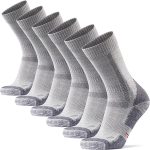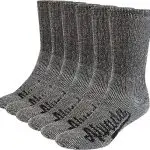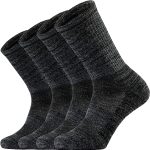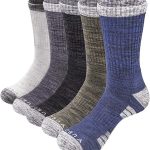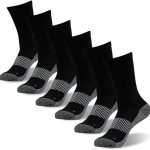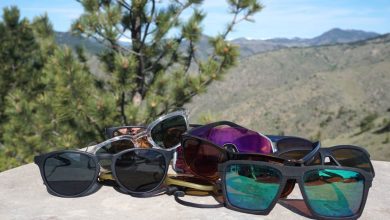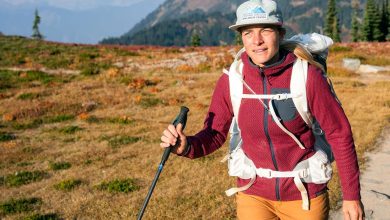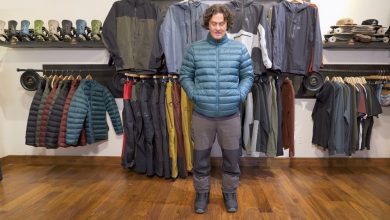Best Trekking And Hiking Socks: Buyer’s Guide

Socks can’t live without them; living with them is such bliss . If you resonate with this sentence, we have the article for you. You see, socks play an important part in our everyday life, and their importance rises a lot while traveling. And, oh boy, socks are integral for trekking and hiking. Something that we cannot miss at all.
Rigorous physical activities such as trekking and hiking require your feet to remain dry and comfortable to trek more while also keeping injuries to a minimum. The sock you choose must absorb your sweat and odor so you do not kill other trekking and hiking individuals. In addition, trekking and hiking socks must also be long-lasting, weather-resistant, and sturdy.
While choosing specific socks for trekking and hiking, you must look for a particular type of material, length, cushioning, and fit. Sounds daunting? Don’t worry because we are here to break it down for you.
What kind of socks to use for hiking?
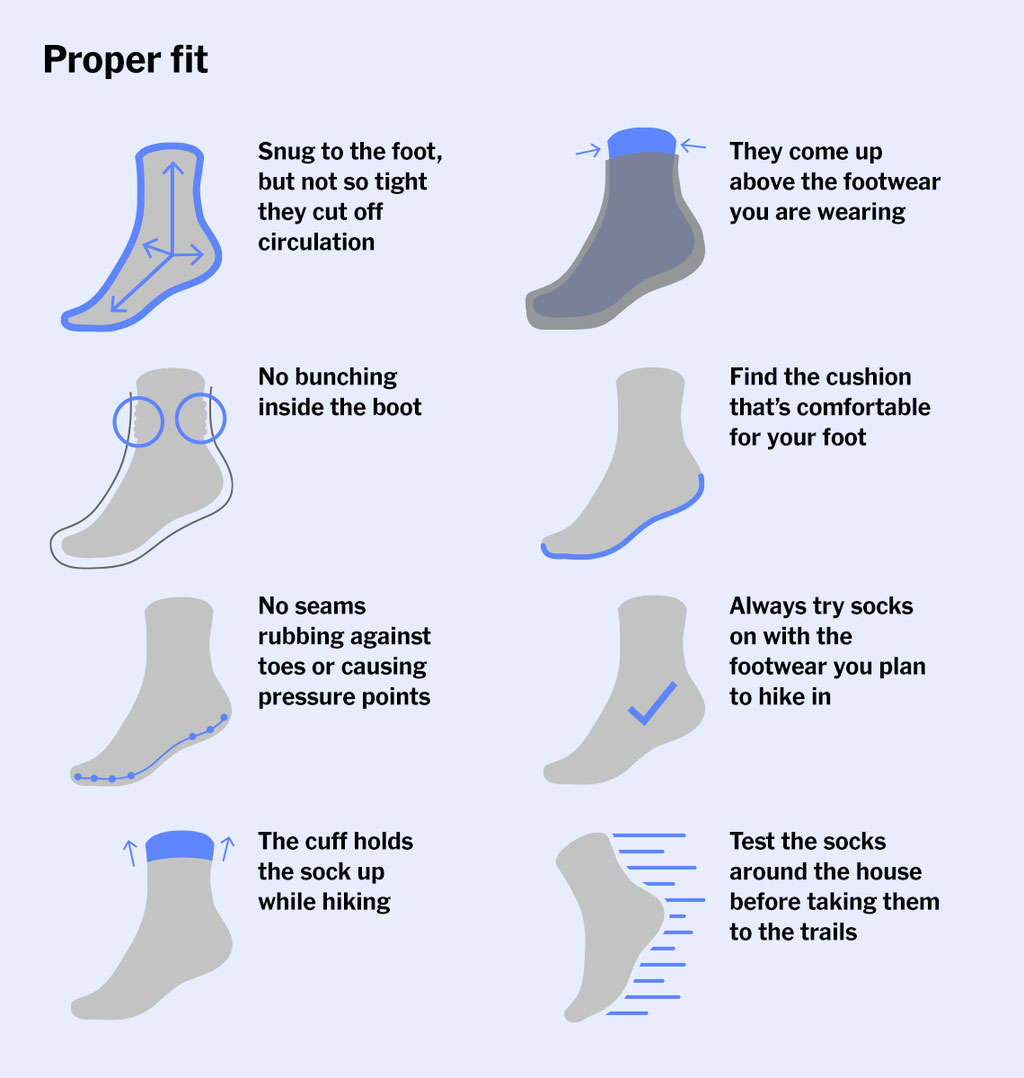
While choosing socks for hiking, look for socks that allow ample air circulation, are durable, and protect your feet from abrasion. Also, look for socks that dry extremely fast and absorb moisture quickly so that the moisture in the form of sweat, rain, or when you accidentally step into a puddle stays outside and doesn’t bother your feet for a long time.
Your hiking sock should also protect you from the pesky blisters and hotspots you might get after a day of hiking.
Keeping those requirements in mind, did you know that socks made from Merino wool provide all the features and much more? So, most of the time, people choose socks made from Merino wool when choosing their next hiking socks. We will discuss Merino wool socks as we go along the article.
Finally, the length or the height of the sock you choose for hiking must adhere to the weather and surrounding you are hiking in. Also, look at the material waving pattern while purchasing your next hiking socks. Hiking socks must also have cushioning, which depends on the hiking trail you wish to walk on.
What kind of socks to use for trekking?

The socks to use for trekking must be flexible, stretchable, and easy to wear. It must also fit your feet snugly, so while purchasing a trekking sock, look for one according to your feet’s anatomy.
Further, trekking socks must keep you warm during winter, cool during summer, but most importantly, comfortable all year around. Your sock must be comfortable since trekking requires adventurous walking in rugged terrain and landscapes. It must also withstand extreme temperatures, both hot and cold.
Your trekking socks must be ready for mountaineering expeditions. Like hiking socks, they must wick moisture and dry quickly. If the trekking socks are made from Merino wool, it is the best because this type of wool provides a temperature-regulating feature. It must also have cushioning on the targeted areas, such as shin and instep, to lower the impact of harsh trekking trails directly on foot.
Finally, trekking socks must insulate your feet as much as possible and protect against adverse environmental and weather conditions. If the socks are specially made for left and right feet, those are the best trekking socks.
Also, look for the height of the trekking socks before buying one. We will discuss the various heights of trekking and hiking socks later in the article. Additionally, buying trekking and hiking socks according to the type of shoes you are wearing is better. You can always ask the salesperson for help deciding what socks to buy with your shoes.
Are special socks necessary for trekking and hiking?

We have already discussed the required checkboxes trekking, and hiking socks are required to fill. So, according to that, yes, special socks are necessary for trekking and hiking.
You see, trekking and hiking are physical activities that can seriously injure our bodies if the wrong equipment and clothing are used for them. Believe it or not, choosing the right type of sock for trekking and hiking is as important as choosing shoes for these activities. We know that socks specially designed for these activities are considerably higher but worth it. Trust us.
Socks especially made for trekking and hiking have a higher cushioning level. The cushioning is provided in the ball and the heel area of our feet. A special type of knitting technique usually does cushioning in a sock to make the targeted area thicker than normal. In trekking and hiking socks, the cushioned areas are apparent and made stronger. Also, various levels of cushioning ranging from thick to thin are available on the market.
Also, hiking and trekking socks have higher insulation and moisture-absorbing capabilities than normal socks. They are also well-compressed to fit our legs as snugly as possible and are more strong and durable than other socks.
Are wool socks good for hiking and trekking?

Wool is undoubtedly the most common material for a trekking sock. Further, one can consider wool a superhero of sock material because it not only checks sweat from your feet by regulating temperature but also provides a cushion-like sensation to your feet. Also, wool can help reduce odor after a long day of trekking or hiking since it is naturally antimicrobial.
However, it is also important to know that woolen socks are often mixed with other synthetic materials to increase their durability and decrease drying time.
Nowadays, you can hear much about Merino wool since it is less itchy than other wools in the market, so it is preferred when choosing socks for trekking. Also, Merino wool socks are warm and soft. They also keep your odor at bay while being super moisture-absorbing.
Another thing to add to the pro list of Merino woolen socks is that they are lightweight, too, so they suit almost all environments and weather conditions. Merino wool mixed with other synthetic material works best for an all day hiking and trekking journey.
So, wool socks are good for hiking and trekking; when mixed with other materials, they are even better.
What socks to wear with hiking and trekking boots?
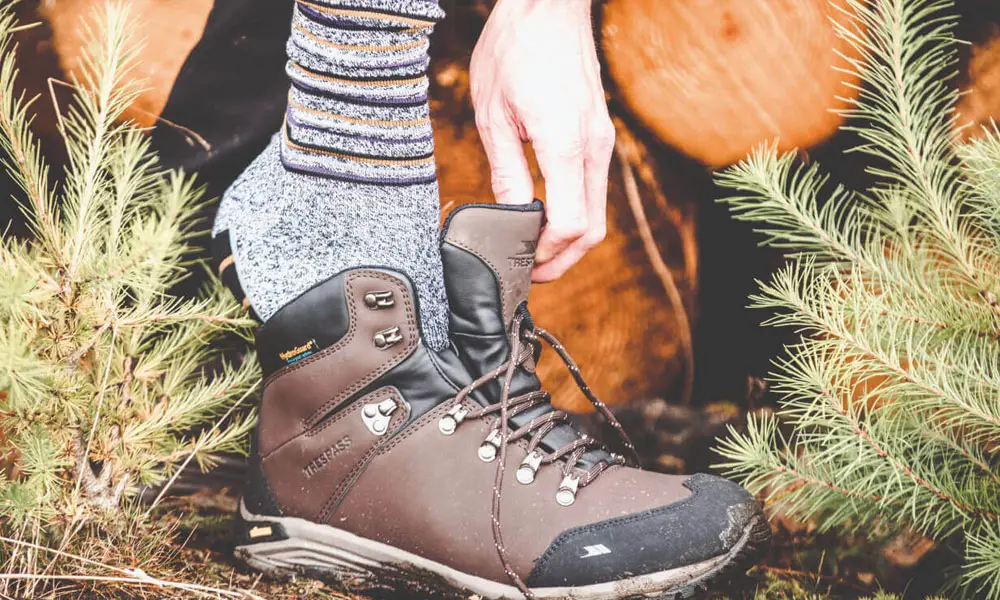
Hiking and trekking boots demand a different sock from your average hiking and trekking shoes. Additionally, it is important to understand that although normal hiking and trekking socks work well with boots, some hiking socks also work well with shoes, but boots can be meh.
First, while choosing socks for hiking and trekking, socks stay away from those made from cotton. This is the most important thing. You are bound to produce a lot of sweat when hiking or trekking, and cotton isn’t known for its moisture-wicking property. On top of that, it can create a lot of blisters too. Yuck! So, stay away from cotton socks.
Second, consider seasons as a great factor when choosing socks for boots.
For example, you must invest in lightweight, thin trekking or hiking socks during summer. Also, look for socks that contain 40% to 70% synthetics, such as polyester, elastane, nylon, or Lycra, and 30% to 60% Merino wool. This will ensure that your socks are breathable and also prevent you from having painful blisters.
Also, check the length of your socks before purchasing them. Socks that are only 2 to 5 inches or 5 to 13 centimeters longer than your boot are plenty.
Talking about the winter season, you might want to layer up your hiking socks during winter time. Usually, midweight hiking socks and thin sock liners are layered together. If you do not want to layer, that is fine too, since you can wear a single layer of a thick heavyweight sock.
In contrast with the summer trekking and hiking socks in winter, look for socks made of 50% to 80% Merino wool, while the remaining 50% to 20% can be other synthetic materials. With this combination, you will get the right amount of thermoregulation, insulation, and breathability in winter.
The socks can be knee-high if it is extremely cold, but a crew neck length is fine too.
Are compression socks good for hiking and trekking?
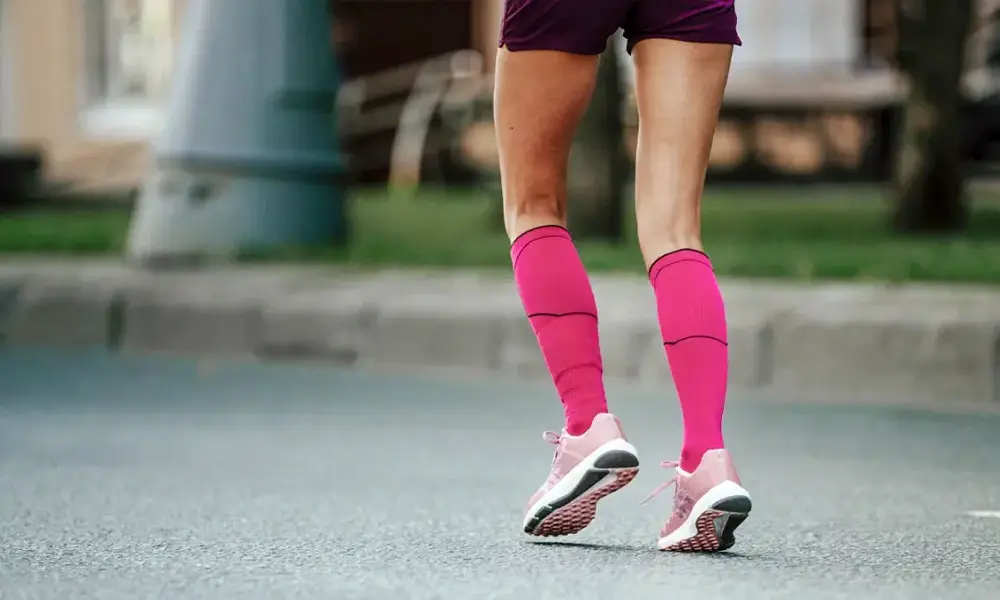
Yes, compression socks are necessary for hiking and trekking. But it might not be a good choice during the winter season.
Trekking and hiking socks need to fit properly. They must be almost skinlike, hugging your legs almost perfectly. The main feature that makes trekking and hiking socks fit snugly is the addition of nylon and Lycra, which increases the elasticity of the sock.
Nylon also makes a sock durable while making the drying process faster. It decreases friction, and so decreases the chance of getting blisters.
Although trekking and hiking socks found in the market aren’t credited medically, they provide some sense of compression, making you feel less tired after a long day of trekking or hiking. Also, compression socks increase blood flow which also increases recovery speed and can reduce swelling in your legs.
Finally, compression socks can stabilize your ankle joints and support your foot, especially around the arches.
Are polyester socks good for hiking and trekking?
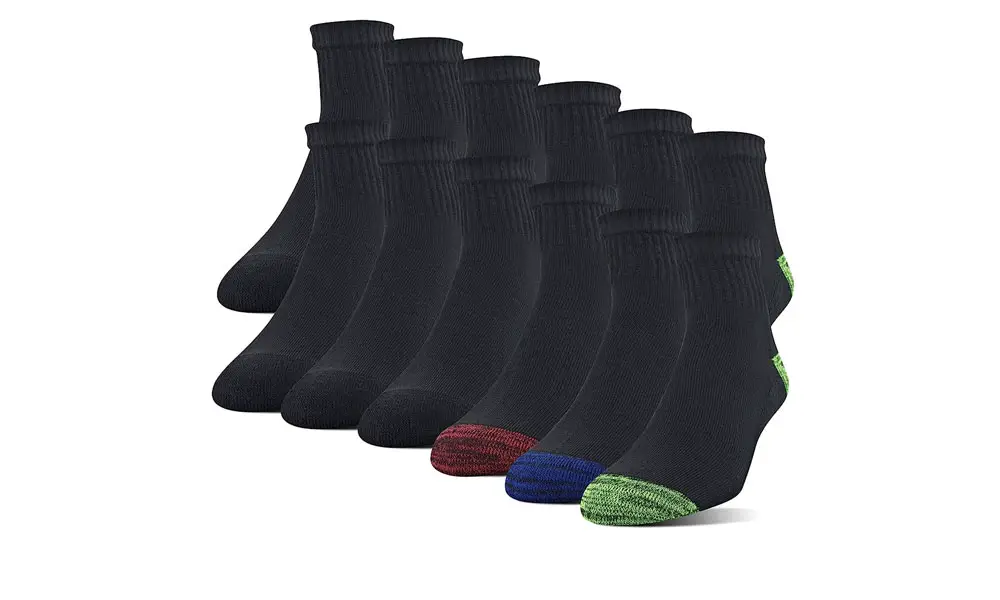
Some trekking and hiking socks are also made from polyester. The next preferred socks, after those made from Merino wool, is well-known among trekkers and hikers because it absorbs moisture, dries quickly, and completely insulates your feet from the surrounding.
Often polyester gets combined with nylon or wool to create a super sock that is durable, comfortable, warm, and dries extremely fast.
Therefore, polyester socks are good for hiking and trekking, but it completely depends on you and the environment you are hiking or trekking in.
Are alpaca socks good for hiking and trekking?
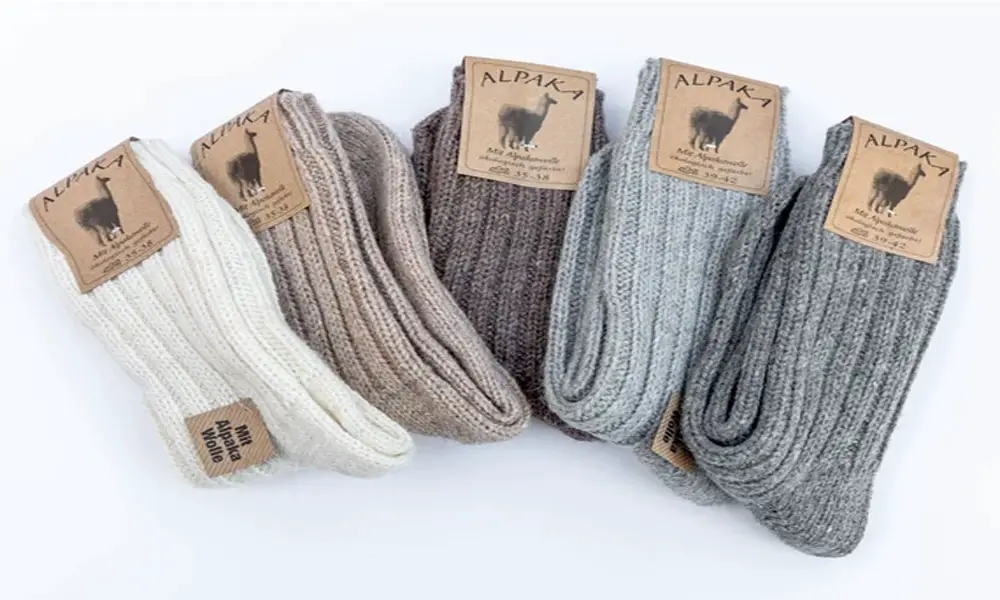
After all the talk about the common Merino wool and synthetic socks used for hiking and trekking, let us switch our gears to alpaca socks. Have you heard about them? If not, then we are here to tell you all about them!
Alpaca wool is very similar to Merino wool. It is breathable and absorbs moisture abundantly. Similarly, it is warm and lightweight. In addition, alpaca wool is naturally antimicrobial; hence, it prevents those stinky odors from coming out from you after a long day of hiking or trekking. They are also made naturally, so they are irritant-proof.
In addition, alpaca socks provide amazing foot support, and washing and drying these socks is easy.
Furthermore, socks made from alpaca wool are windproof. Yes, these thick socks act like a windshield protecting your feet from a windy atmosphere. Additionally, alpaca socks have a natural UV filtering capacity protecting you from the sun’s harmful rays. These socks do not burn easily, so they are fire-proof too. Finally, alpaca socks are stain resistant.
Phew, that is a long list of singing praises about alpaca socks, isn’t it? But wait, we have more; alpaca socks can be worn in any season. Yes, you read that right. Alpaca sacks can easily be worn in spring, summer, autumn, and winter.
So, if you are looking for a natural version of trekking and hiking socks, then alpaca socks can be the best bet.
How to choose hiking and trekking socks?

There are many things to consider while choosing hiking and trekking socks. But if we have to summarize it, the main qualities you need to look for are durability, blister prevention, moisture absorption, and warmth. These are the main characteristics one must consider while buying a trekking and hiking sock.
Now, let us look at the dimensions you must consider while choosing hiking and trekking socks. These are again broken down into four considerations.
Fabric of the Sock
Trekking and hiking socks need to be made of the right material. Merino wool socks or nylon, polyester, and alpaca wool socks can be chosen.
Cushioning of the Sock
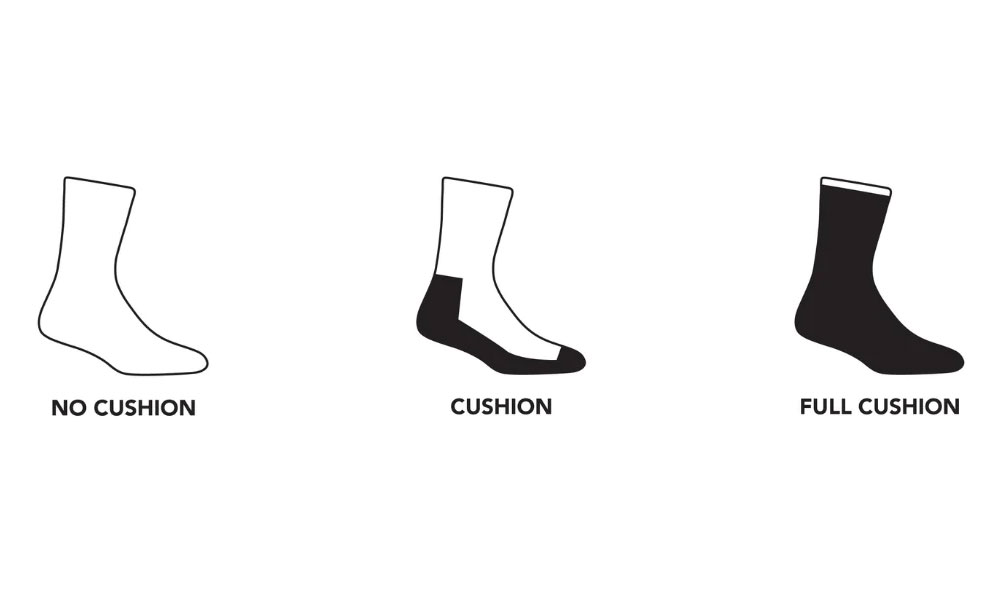
Cushioning of the socks is based on the type of trekking or hiking shoes you choose. There are mainly four types of cushioning. No cushioning is preferably used during summer as a layering sock to absorb extra moisture.
Light cushioning is preferred when it is warm, and you need extra comfort from your socks with moisture-wick technology. Moderate cushioning is required when hiking or backpacking, and you need extra support on your feet with a little warmth.
Finally, heavily cushioned trekking and hiking socks are required during rigorous hiking and trekking, especially during winter. These are recommended during mountain trekking rather than hiking in warmer temperatures.
Fit of the Sock
The fit of the trekking and hiking socks depends upon the compression of the sock. Choose socks that fit you like a glove to prevent the formation of blisters and hotspots during your journey.
Height of the Sock
The height of the sock will depend upon the type of trekking and hiking adventure you choose. The no-show socks are rarely worn during hiking and trekking, while ankle socks are worn when you wear low-cut hiking and trekking shoes or boots.
The most worn height of the sock is crew length. These are longer than ankle length and can be worn with any length of shoes or boots. But wearing crew-length socks during summer with low-cut shoes or boots can cause some unnecessary warmth.
Finally, knee-length socks are worn during mountaineering. These protect your legs from blisters on the feet, the shin, and the calf.
So, this brings us to the end of the article. We hope you have gained as much knowledge as possible to make your next great trekking and hiking socks. Happy adventure!
Get Insights On:
